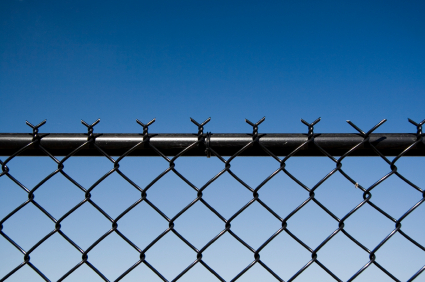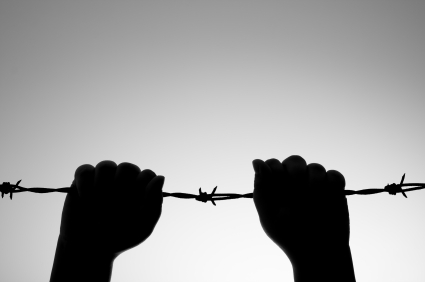 Just before Christmas I read an article in the Financial Times about increasing numbers of migrants trying to enter Ceuta and Melilla. These two Spanish cities on the Moroccan coast represent the only way of entering Europe from Africa without crossing the Mediterranean. The Spanish response to the increase has been to construct ever higher fences, to deploy more border guards, and to use more sophisticated technology to detect and deter migrants. But the human cost of making it more difficult to enter Europe is high. The Lampedusa tragedy in October last year, when hundreds of migrants drowned, showed this in tragic fashion.
Just before Christmas I read an article in the Financial Times about increasing numbers of migrants trying to enter Ceuta and Melilla. These two Spanish cities on the Moroccan coast represent the only way of entering Europe from Africa without crossing the Mediterranean. The Spanish response to the increase has been to construct ever higher fences, to deploy more border guards, and to use more sophisticated technology to detect and deter migrants. But the human cost of making it more difficult to enter Europe is high. The Lampedusa tragedy in October last year, when hundreds of migrants drowned, showed this in tragic fashion.
While such events for a short while highlight the desperate situation of migrants, all too often in Europe the human stories behind migration are side-lined in favour of a narrow focus on the perceived threats of migrants to national security or to the welfare state. In this view, immigrants are seen as either deserving or undeserving depending on their motives for migrating, but how helpful or accurate is this understanding?
The complexity of migration
When I teach on the Migration Studies MSc, I emphasize the complexity of migration and its long history. People may move because they want to escape poverty, to improve the life chances of their nearest and dearest, to find better jobs, to escape corruption, instability and repression, or for love and adventure. It is not always possible to disentangle the many reasons that motivate people to decide to migrate, and as with other things in life, motivations and hope may change over time. But it is not only conditions in ‘sending societies’ that keep people migrating. As Hein de Haas argues, while politicians in rich migrant-receiving countries like to give the impression that they are in control of immigration, the demand for cheap and flexible labour ensures that migrants keep coming.
Border controls don’t stop migration
Because many migrants have to take increasingly dangerous and circuitous routes to enter the rich countries they hope to reach, for many it becomes impossible to return. It is the increasingly restrictive immigration policies of rich countries that induce migrants to seek people smugglers, and that make people stay once they are in even if they had never planned to settle – because they don’t know if they will be able to return again if they leave.
Migration is not new
In the often shrill tones that debates about migration take in rich countries, it is easy to forget that human mobility has a long history. In my research on the Cuban diaspora in Spain, I often came across family stories of multi-generational mobility across the Atlantic, up and down the Americas and beyond the East-West divide of Cold War Europe.
 One thing that always struck me was the fact that despite advances in transport and communications, migration seemed to have become more rather than less difficult toward the end of the twentieth and into the early twenty-first century. As one Cuban in Madrid remarked to me after telling me of the migrations of his grandparents in the early twentieth century from Spain to Mexico and Cuba: ‘In that epoch people didn’t have passports, you didn’t need citizenship or work permits; you just went and said “look, I’d like work” … It wasn’t like today when you need seventy-five permits from the authorities to do anything’ (see my chapter in Cuba in a Global Context: International Relations, Internationalism and Transnationalism). As one Spanish border guard in Melilla readily acknowledged, ‘[t]he fence can act as a brake but you cannot stop them from coming’. More policing and higher fences seem an inhumane and inefficient answer to human mobility.
One thing that always struck me was the fact that despite advances in transport and communications, migration seemed to have become more rather than less difficult toward the end of the twentieth and into the early twenty-first century. As one Cuban in Madrid remarked to me after telling me of the migrations of his grandparents in the early twentieth century from Spain to Mexico and Cuba: ‘In that epoch people didn’t have passports, you didn’t need citizenship or work permits; you just went and said “look, I’d like work” … It wasn’t like today when you need seventy-five permits from the authorities to do anything’ (see my chapter in Cuba in a Global Context: International Relations, Internationalism and Transnationalism). As one Spanish border guard in Melilla readily acknowledged, ‘[t]he fence can act as a brake but you cannot stop them from coming’. More policing and higher fences seem an inhumane and inefficient answer to human mobility.
See more info
- Podcasts of lectures from the MSc Migration Studies, incl. ‘Panel debate: Why do people migrate’
- Migration Oxford: How to apply for the MSc Migration Studies